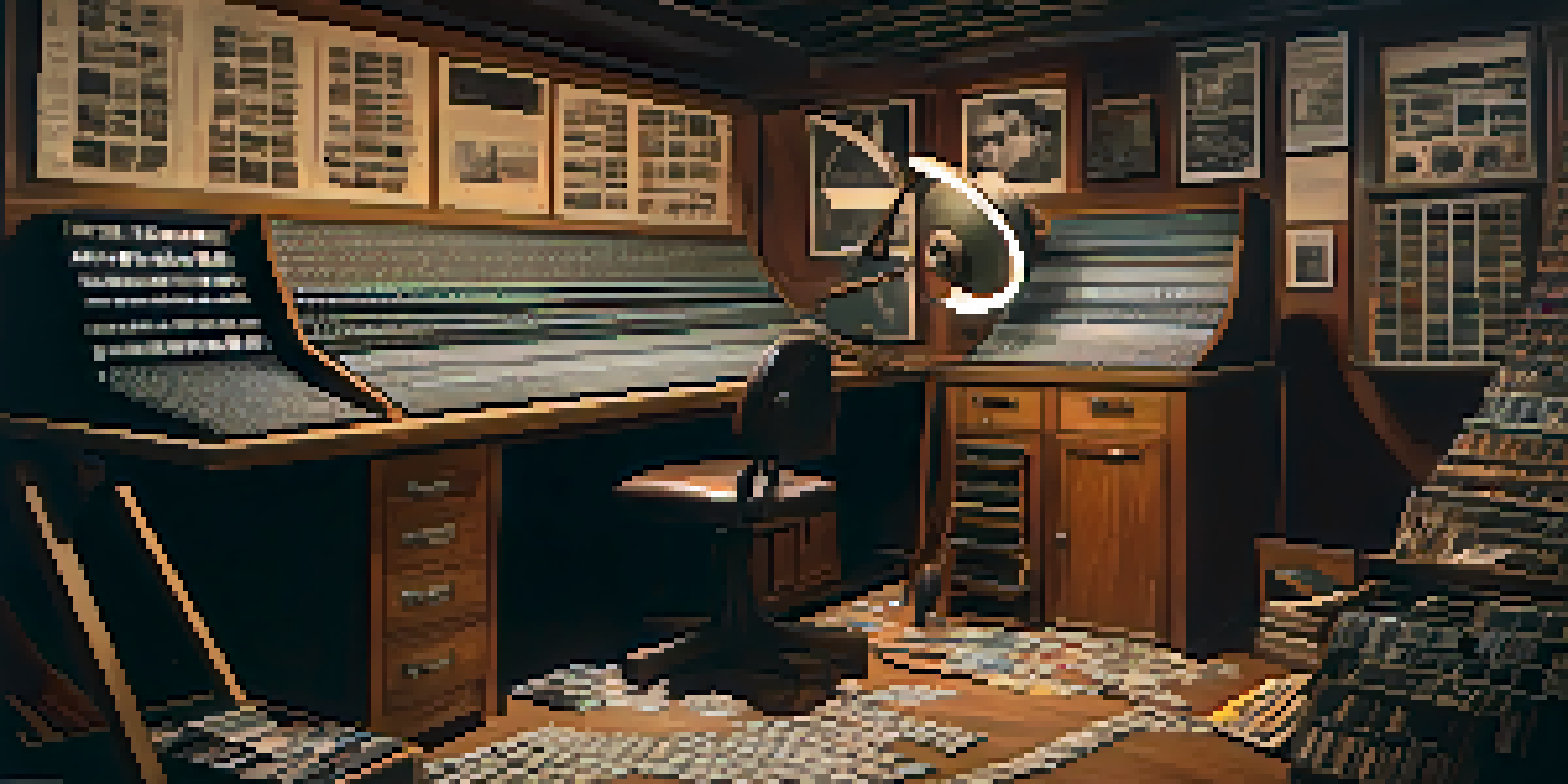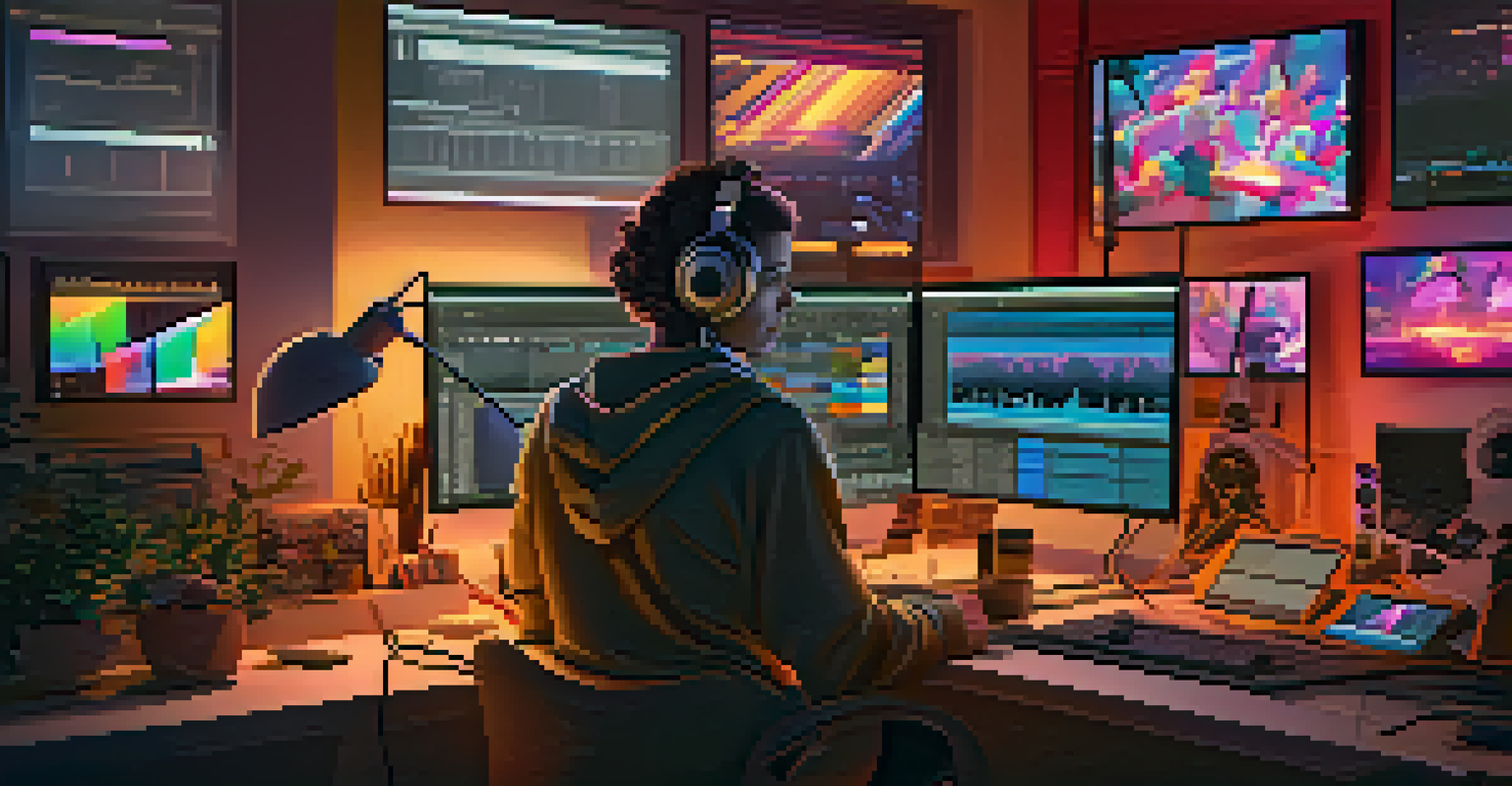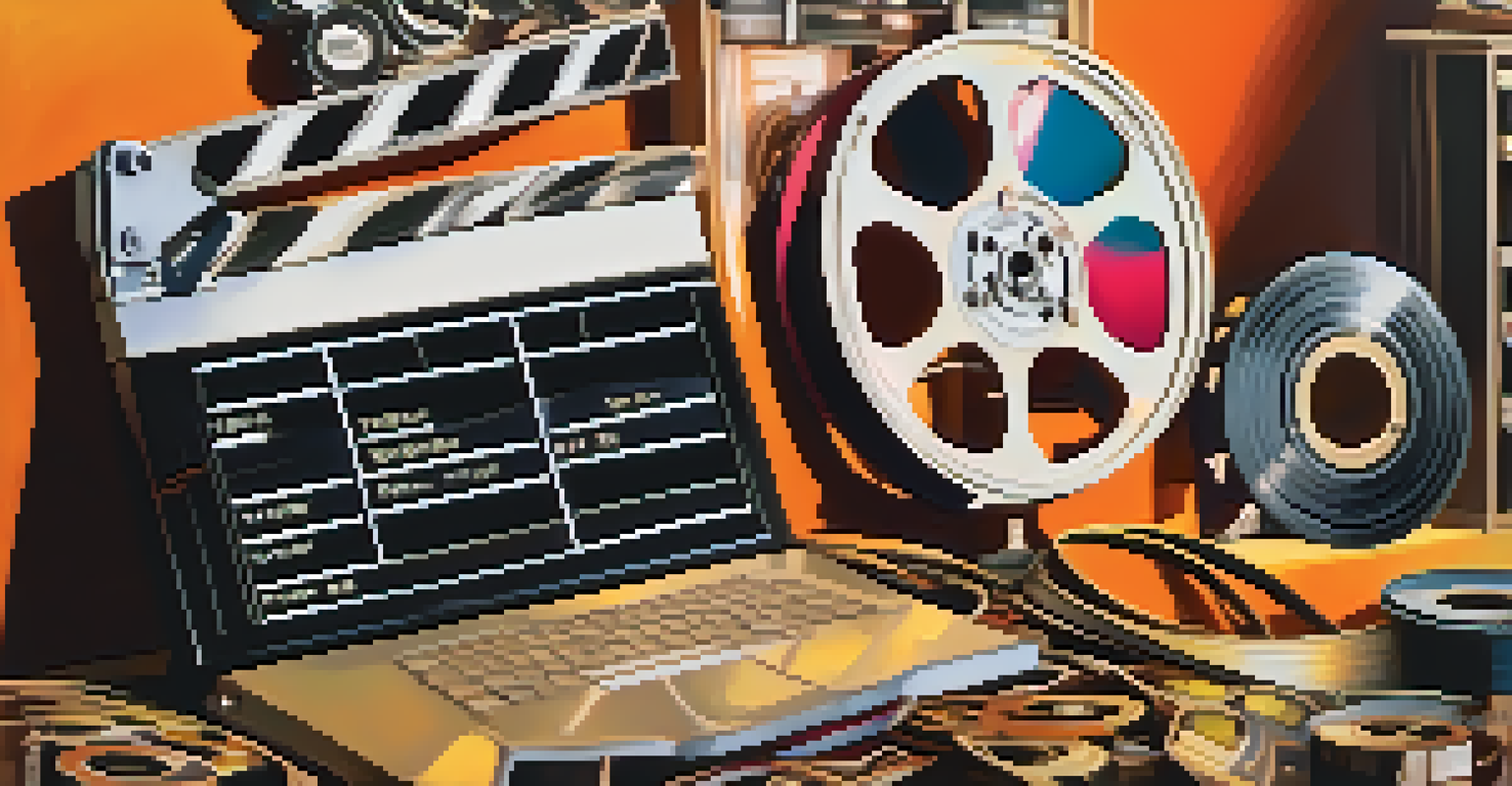The Evolution of Film Editing: From Manual to Digital

The Birth of Film Editing: A Manual Endeavor
Film editing began in the late 19th century when pioneers like Georges Méliès experimented with cutting and splicing film to create effects. In those early days, editors worked with physical film strips and scissors, meticulously cutting scenes to craft a narrative. This hands-on process was labor-intensive, requiring a keen eye for detail and artistic vision.
Editing is the only art that is not a visual art; it is a combination of all the arts.
As films grew longer and more complex, the need for skilled editors became evident. They had to piece together scenes not only for continuity but also to evoke emotions and tell a story effectively. The art of editing was, therefore, not just a technical task but a creative one, where intuition played a huge role.
This manual approach laid the groundwork for what film editing would become, influencing generations of filmmakers. The tactile nature of cutting and splicing gave editors a direct connection to the film, allowing them to feel the rhythm and pacing of their work.
The Rise of Editing Techniques in the Silent Era
During the silent film era, editing techniques evolved significantly as filmmakers began to understand the power of editing in storytelling. Editors experimented with cross-cutting, parallel editing, and jump cuts, creating a sense of urgency and excitement in their narratives. These techniques allowed for more dynamic storytelling, paving the way for what would come next.

Notable films like D.W. Griffith's 'The Birth of a Nation' showcased these advanced editing techniques, demonstrating how they could manipulate time and space on screen. The ability to intercut scenes not only enhanced the narrative but also engaged audiences on a deeper emotional level.
Evolution of Editing Techniques
Film editing has transformed from manual splicing in the late 19th century to sophisticated digital techniques, showcasing its crucial role in storytelling.
As these techniques became more refined, the role of the editor transformed from a technical laborer to a crucial creative partner in the filmmaking process. It highlighted the importance of editing in shaping the audience's experience and the overall impact of the film.
The Golden Age of Hollywood and Editing Innovations
The Golden Age of Hollywood saw the emergence of more sophisticated editing practices, driven by the need for storytelling efficiency and audience engagement. Editors like V. A. L. Smith and Margaret Booth became renowned for their ability to weave intricate narratives that captivated viewers. They were instrumental in establishing editing as a critical component of film language.
The editor is the one who has to make it work, and that's where the art comes in.
The introduction of sound in the late 1920s added another layer of complexity to film editing. Editors had to learn to synchronize audio with visuals while maintaining the film's rhythm and flow. This era also saw the birth of more nuanced techniques like montage, which allowed for emotional storytelling through rapid scene changes.
These innovations not only shaped the films of the time but also set the stage for future generations of editors. The lessons learned during this era continue to influence how films are edited today, emphasizing the importance of pacing and narrative structure.
Transition to Digital: The Editing Revolution
The advent of digital technology in the late 20th century marked a revolutionary shift in film editing. No longer confined to physical film and splicing, editors gained access to software that allowed for greater flexibility and creativity. Programs like Avid Media Composer and Adobe Premiere Pro became industry standards, empowering editors to experiment like never before.
Digital editing brought about a new era of efficiency, enabling editors to make changes quickly and easily. The ability to work with high-resolution footage and perform non-linear editing transformed the editing process, allowing for a more fluid and intuitive approach. It also opened the door for remote collaboration, enabling teams to work together regardless of location.
Impact of Technology on Editing
The shift to digital editing has revolutionized the process, allowing for greater creativity, efficiency, and accessibility for filmmakers.
This digital transition not only changed how films were edited but also democratized the editing process, allowing aspiring filmmakers to create and share their work more easily. As editing software became more accessible, a new wave of independent filmmakers emerged, showcasing diverse storytelling styles.
Modern Editing Techniques: Embracing Technology
Today, film editing has embraced advanced technologies such as artificial intelligence and machine learning. These tools assist editors in identifying patterns, suggesting cuts, and even enhancing visual effects, making the editing process faster and more efficient. This integration of technology allows for a seamless blend of creativity and technical prowess.
Moreover, modern editors are now equipped to handle a variety of formats, from traditional films to web series and streaming content. This versatility has expanded the scope of editing, as editors must adapt their skills to meet the demands of different platforms and audiences.
The rise of social media and short-form content has also influenced editing styles, with a focus on punchy, engaging cuts that capture attention quickly. Editors today must balance artistic expression with the fast-paced nature of digital consumption, showcasing their adaptability in an ever-evolving landscape.
The Future of Film Editing: Trends to Watch
As we look to the future, several trends are shaping the landscape of film editing. The integration of virtual reality (VR) and augmented reality (AR) is paving the way for immersive storytelling experiences. Editors will need to develop new techniques to navigate these platforms, creating narratives that engage audiences in innovative ways.
Additionally, the growth of interactive content is pushing editors to rethink traditional storytelling structures. This shift challenges editors to craft experiences where audience choices influence the narrative, requiring a different skill set and creative approach.
Future Trends in Film Editing
Emerging technologies like VR and interactive content are shaping the future of film editing, requiring editors to adapt and innovate in their craft.
Finally, as technology continues to advance, the role of the editor will likely evolve even further. With the rise of automation, editors may find themselves focusing more on the creative aspects of their work while letting technology handle repetitive tasks, allowing for more time to innovate and experiment.
Conclusion: Celebrating the Art of Film Editing
The evolution of film editing reflects the broader changes in the film industry and technological advancements. From the manual splicing of film strips to today's digital editing suites, the craft has transformed while retaining its core purpose: to tell compelling stories. Editors are the unsung heroes of filmmaking, shaping how audiences experience stories on screen.
As we celebrate this evolution, it's essential to recognize the skill and artistry involved in editing. Each cut, transition, and effect is a deliberate choice that contributes to the film's overall impact, often going unnoticed by viewers but crucial to the storytelling process.

Looking forward, the future of film editing is bright, with endless possibilities for innovation. As technology continues to evolve, so too will the art of editing, ensuring that it remains a vital and dynamic aspect of filmmaking for years to come.